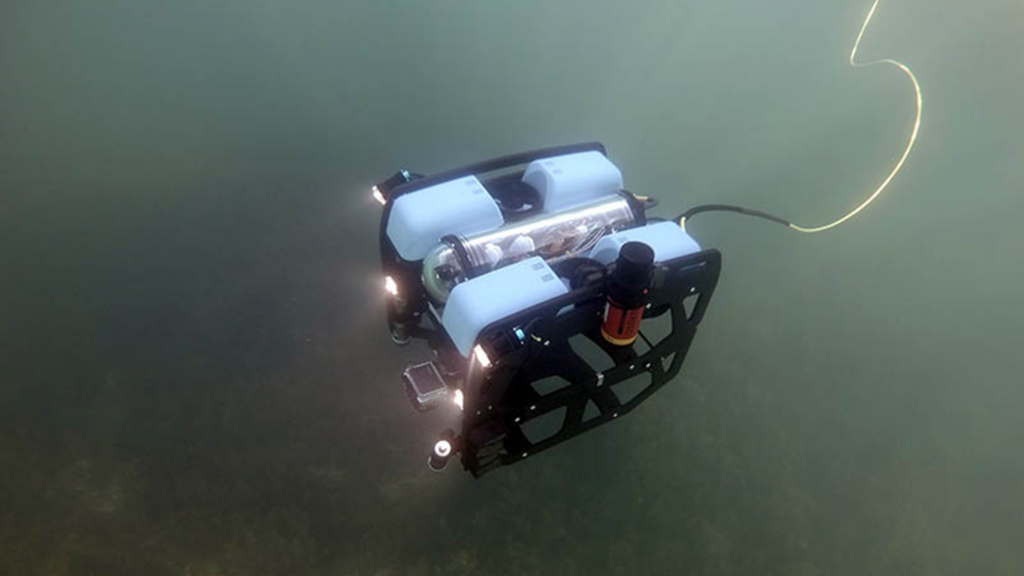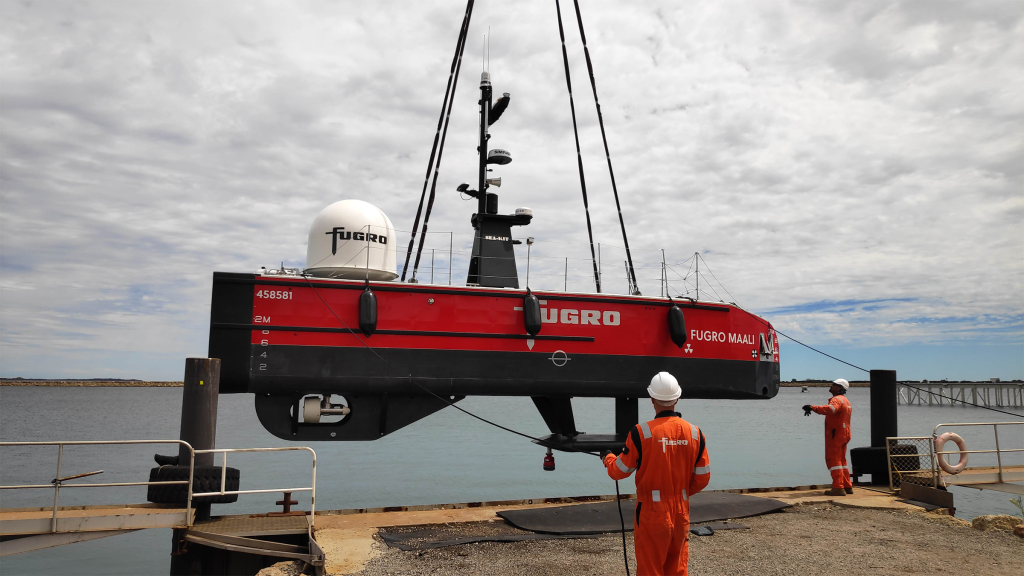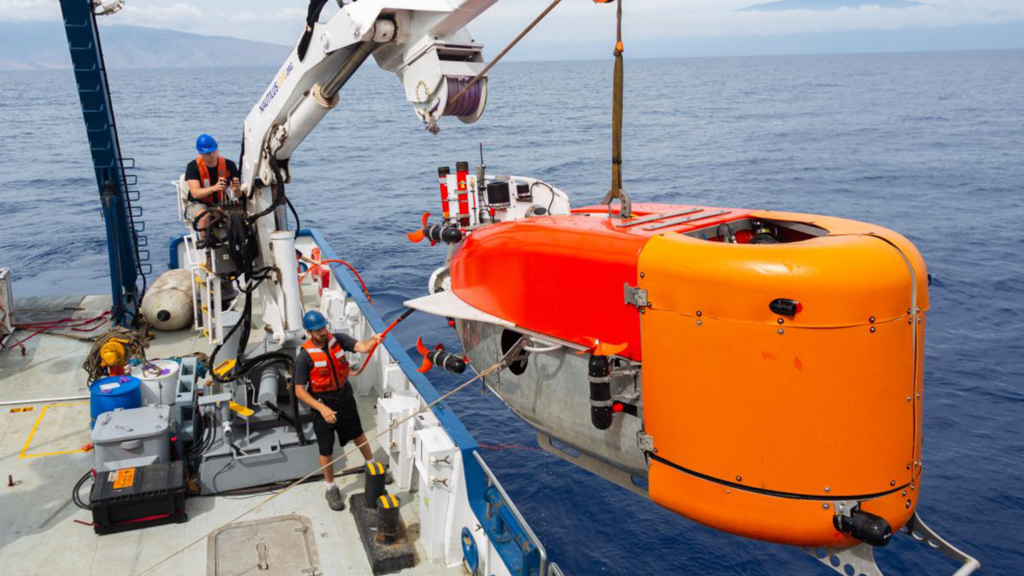An Ultra-Short Baseline (USBL), is a method of underwater acoustic positioning which is used to calculate the position of underwater targets.
How does a USBL work?
A USBL system consists of a transceiver, which is usually mounted on a pole under a ship- and a transponder or responder which is normally on the seafloor or on an ROV, AUV or UUV.
A USBL system works by the transceiver transmitting an acoustic pulse which is detected by a subsea transponder, this then replies with its own acoustic pulse. The return pulse is then detected by the shipboard transceiver.
The time from the transmission of the initial acoustic pulse until the reply is detected by the transceiver is measured by the USBL system and then converted into a range. For subsea position to be calculated, both the range and angle from the transceiver to the subsea beacon must be calculated. Angles are measured by the transceiver which contains an array of transducers. A transceiver head typically contains 3 or more transducers separated by a baseline of 10cm or less.
USBLs are available for a variety of uses and operating ranges. Ranger 2 is our most capable tracking and DP (dynamic positioning) reference USBL, it is installed on a global fleet of vessels in all water depths with an operating range of up to 11,000m. Our Micro-Ranger 2 USBL is portable and quick to set up and is perfect for simple USBL tasks such as tracking an ROV, micro AUV or divers with an operating range of up to 995m. Our Mini-Ranger 2 USBL is suitable for those who need to track targets further, simultaneously and with survey-quality precision with an operating range of up to 4,000m.
- USBL tracking small ROV
- USBL being used on a USV to track underwater AUVs
- USBL tracking a large AUV
More specific information about our USBLs can be found here.
Contact [email protected] for more information.


